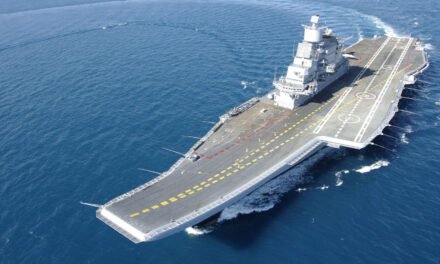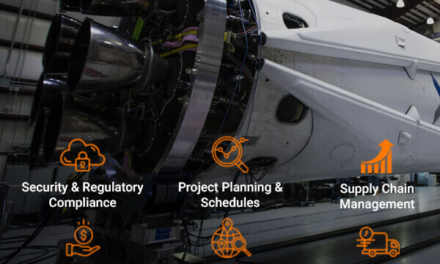Naval defense systems encompass a range of technologies designed to protect warships, fleets, and coastal assets from threats like missiles, aircraft, submarines, and surface vessels. These systems are categorized based on their purpose, operating principles, and target type. Here’s an overview of the primary types of naval defense systems and how they operate:
1. Anti-Aircraft Defense Systems
These systems protect naval assets from aerial threats such as aircraft, drones, and incoming missiles.
A. Surface-to-Air Missile (SAM) Systems
- Purpose: Engage and destroy airborne threats at varying ranges.
- How They Operate:
- Radar systems detect and track incoming aerial targets.
- Command and control (C2) systems assign targets to interceptors.
- SAMs are launched to destroy the threat either through direct impact (hit-to-kill) or proximity detonation.
- Examples:
- Aegis Combat System: Utilizes SM-2, SM-3, and SM-6 missiles for layered air defense.
- S-300F Fort: Naval variant of Russia’s S-300 SAM system.
B. Close-In Weapon Systems (CIWS)
- Purpose: Provide last-line defense against missiles and aircraft.
- How They Operate:
- Automated radar or infrared sensors detect and track fast-moving threats.
- Gatling guns or rapid-firing cannons engage threats within close range.
- Examples:
- Phalanx CIWS (U.S.): Uses a 20mm Gatling gun.
- Kashtan CIWS (Russia): Combines missiles and automatic cannons.
C. Naval Guns with Anti-Aircraft Capability
- Purpose: Engage aerial threats at medium to long ranges.
- How They Operate:
- Advanced fire-control systems direct naval guns to track and shoot moving aerial targets.
- Examples:
- Oto Melara 76mm Super Rapid: Versatile naval gun with anti-aircraft capabilities.
2. Anti-Submarine Warfare (ASW) Systems
These systems are designed to detect, track, and neutralize submarines.
A. Sonar Systems
- Purpose: Detect submarines and underwater threats.
- How They Operate:
- Active Sonar: Emits sound waves and detects echoes from underwater objects.
- Passive Sonar: Listens for noise generated by submarines or torpedoes.
- Examples:
- AN/SQS-53 (U.S.): Advanced hull-mounted sonar.
- Towed Array Sonar Systems (TASS): Extended-range submarine detection.
B. Torpedoes
- Purpose: Attack enemy submarines or ships.
- How They Operate:
- Fired from ships, submarines, or helicopters.
- Equipped with sonar for target tracking and homing.
- Examples:
- Mk 48 Torpedo (U.S.): Advanced heavyweight torpedo.
- Shkval Torpedo (Russia): High-speed supercavitating torpedo.
C. Anti-Submarine Rockets (ASROC)
- Purpose: Rapidly deliver torpedoes to distant underwater targets.
- How They Operate:
- Rocket-propelled torpedoes are launched to a target’s location, where they deploy into the water.
- Examples:
- RUM-139 VL-ASROC (U.S.).
D. Depth Charges
- Purpose: Neutralize submarines by creating underwater shockwaves.
- How They Operate:
- Dropped from ships or helicopters.
- Explode at pre-determined depths to damage or destroy submarines.
3. Anti-Ship Defense Systems
These systems counter surface vessels and fast attack crafts.
A. Anti-Ship Missiles (ASMs)
- Purpose: Destroy enemy ships at long ranges.
- How They Operate:
- Employ radar, infrared, or GPS guidance for precision targeting.
- Follow sea-skimming trajectories to avoid detection.
- Examples:
- Harpoon (U.S.): Long-range subsonic missile.
- P-800 Oniks (Russia): Supersonic anti-ship missile.
B. Naval Guns
- Purpose: Engage surface targets.
- How They Operate:
- Directed by advanced fire-control systems for high accuracy.
- Examples:
- 5-inch/54 caliber Mark 45 (U.S.).
4. Ballistic Missile Defense (BMD) Systems
These systems protect naval assets and nearby regions from ballistic missile threats.
- Purpose: Detect, track, and intercept ballistic missiles.
- How They Operate:
- Radar systems detect missile launches and calculate their trajectories.
- Interceptor missiles, like SM-3, are launched to destroy targets in the midcourse or terminal phase.
- Examples:
- Aegis Ballistic Missile Defense System: Deployed on U.S. Navy destroyers and cruisers.
5. Electronic Warfare (EW) Systems
These systems disrupt or deceive enemy sensors and communication systems.
A. Jamming Systems
- Purpose: Disrupt radar and communication signals.
- How They Operate:
- Emit high-power signals to confuse enemy radars and communications.
- Examples:
- AN/SLQ-32 EW Suite (U.S.).
B. Decoys
- Purpose: Divert enemy missiles away from the ship.
- How They Operate:
- Deploy chaff (metallic strips) or flares to confuse radar or infrared-guided missiles.
- Examples:
- Nulka Active Decoy (Australia/U.S.): Countermeasures for radar-guided threats.
6. Mine Countermeasure Systems
- Purpose: Detect and neutralize naval mines.
- How They Operate:
- Use sonar-equipped drones or ships to locate and disable underwater mines.
- Examples:
- Unmanned Surface Vehicles (USVs): Specialized for mine hunting and neutralization.
Naval defense systems form a multi-layered shield that integrates various technologies to protect against diverse threats. These systems, from anti-aircraft and anti-submarine technologies to electronic warfare and ballistic missile defense, ensure the survivability of naval assets in modern warfare. Continuous innovation and integration remain crucial as threats evolve, including hypersonic missiles, swarm drones, and cyberattacks.













